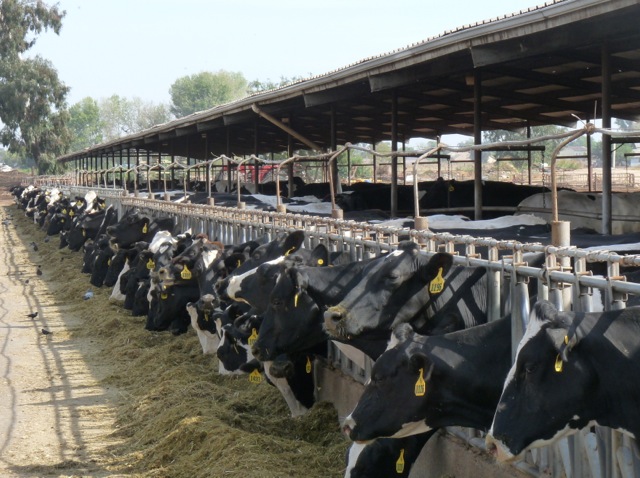Air Resources Board to Rein In Cow Flatulence
Public Enemy #1: Cow Flatulence
By Patrick Cavanaugh, Farm News Director
While not a popular or sexy topic of discussion, flatulence is a very natural activity. Who amongst us hasn’t occasionally burped, belched, or otherwise passed a little gas? When guilty of passing waste gases such as hydrogen, carbon dioxide, methane and other trace gases due to the microbial breakdown of foods during digestion, we may say, “Excuse me.”
 But for dairy cows and other cattle, manners do not suffice; the California Air Resources Board (ARB) has a low tolerance for such naturally occurring and climate-altering gaseousness. The ARB is planning to mandate a 25% reduction in burps and other windy waftage from dairy cows and other cattle, as well as through improved manure management.
But for dairy cows and other cattle, manners do not suffice; the California Air Resources Board (ARB) has a low tolerance for such naturally occurring and climate-altering gaseousness. The ARB is planning to mandate a 25% reduction in burps and other windy waftage from dairy cows and other cattle, as well as through improved manure management.
Anja Raudabaugh, CEO of the Modesto-based Western United Dairymen (WUD), said, “The ARB wants to regulate cow emissions, even though the ARB’s Short-Lived Climate Pollutant (SLCP) reduction strategy acknowledges that there’s no known way to achieve this reduction. The ARB thinks they have ultimate authority, even over what the legislature has given them: two Senate Bills—SB 32 and SB 1383—to limit the emissions from dairy cows and other cattle.”
“We have a social media campaign addressing the legislative advocacy components,” Raudabaugh explained, “to make the legislatures aware that this authority has not been given to ARB by the legislature, and to bring that into perspective.” Raudabaugh said while SB 32 is not that popular because it calls for raising taxes, SB 1383 is worrisome, “because if anybody wanted to achieve something of a win for the legislature this year with respect to greenhouse gas emissions, this is the only bill left,” she said.

Cattle Flatulence Social Media (Source: Western United Dairymen Facebook)
Raudabaugh said that in order for the ARB to achieve their mandated 75% reduction in total dairy methane emissions, they are proposing that 600 dairy digesters be put on the methane grid by 2030. According to the ARB’s own analysis that could cost as much as several billion dollars—more than $2 million, on average, for each of California’s remaining 1,400 family dairy farms.
“That is not only expensive, but digesters do not work for every dairy. They can be an option for some, but because of their expense and the reality that not everyone ‘dairies’ the same way, digesters cannot be a mandated solution,” noted Raudabaugh. “All dairy personnel and other interested Californians should contact your state legislature and urge them to veto both bills and not allow the ARB more powers than they actually have.”










